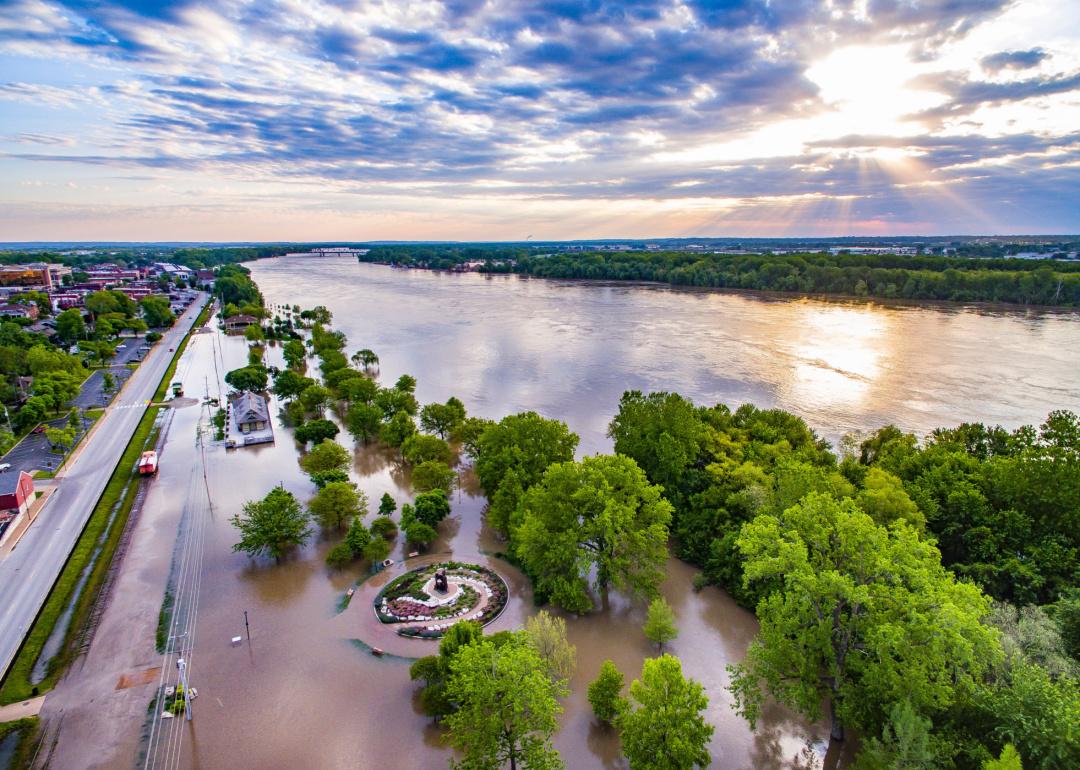
10 states where river flooding will cost US homeowners the most
10 states where river flooding will cost US homeowners the most
While coastal flooding from hurricanes tends to get the most media attention, flooding from overflowing rivers or streams affects all fifty states and is on the rise due to climate change. Known as riverine flooding, it can present a significant threat of property damage that homeowners should be aware of. To explore the impact of riverine flooding on homeowners, MoneyGeek analyzed data from the Federal Emergency Management Agency's (FEMA) most recent National Risk Index to determine the expected cost of property damage per year due to riverine flooding events.
KEY FINDINGS:
- Damage to property caused by riverine flooding is expected to cost $2.9 billion every year. Riverine flooding is the third costliest natural cause of property damage, behind hurricanes and earthquakes.
- The cost of property damage from riverine flooding is highest for residents of Louisiana, where annual expected losses total $51 per person.
- Texas can expect to lose $962 million in property damage to riverine flooding annually, the highest total loss in the nation; the state also has the second-highest expected per capita cost ($32) in the U.S.
- Connecticut experiences the least flooding in terms of costly damage to property, with just $0.63 per capita in expected yearly damages.
- Riverine flooding affects all states and is four times costlier than coastal flooding.
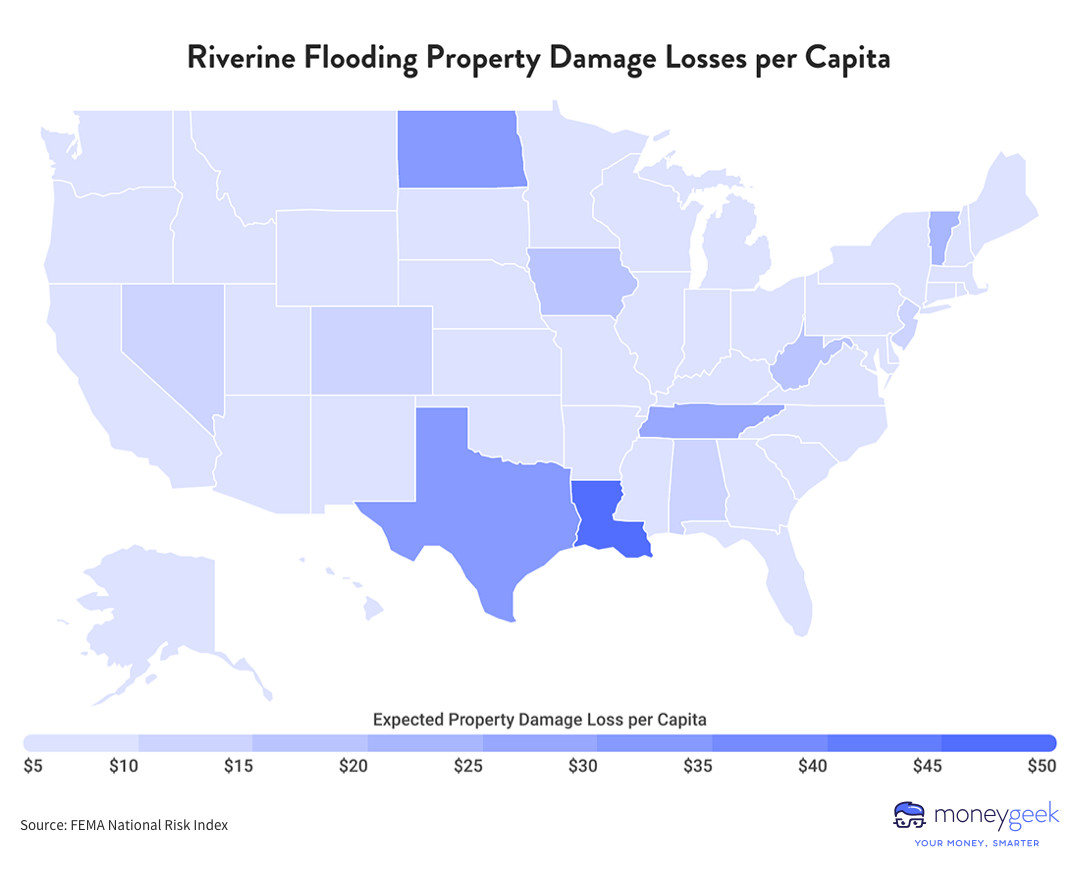
States Where Riverine Flooding Costs Homeowners the Most
So which states are most at risk of experiencing economic losses from riverine flooding? Some states and regions are more flood-prone than others, with five of the top ten states for losses in the Southeastern United States.
The number one state for flood losses, Louisiana, has an expected property damage per capita of $51 per person. That's much more than the second state on the list, Texas, where residents were expected to pay $32 each in damages. However, because Texas is more populous, its total projected flood losses came in at a staggering $962 million, while smaller Louisiana's losses are projected to be $232 million.
Although flood losses are more likely in the Southeast, flooding can happen in all fifty states. North Dakota, Vermont, Iowa, Nevada and New Jersey also held spots in the top ten states for costliest flood losses.
MoneyGeek found that riverine flooding is four times more costly than coastal flooding. Given that riverine flooding affects all fifty states and coastal flooding only touches thirty-two, this may not be surprising, but the monetary difference between the two types of predicted flood damages is staggering: $2.9 billion is expected to be lost to riverine flooding, compared to $783 million to coastal flooding.
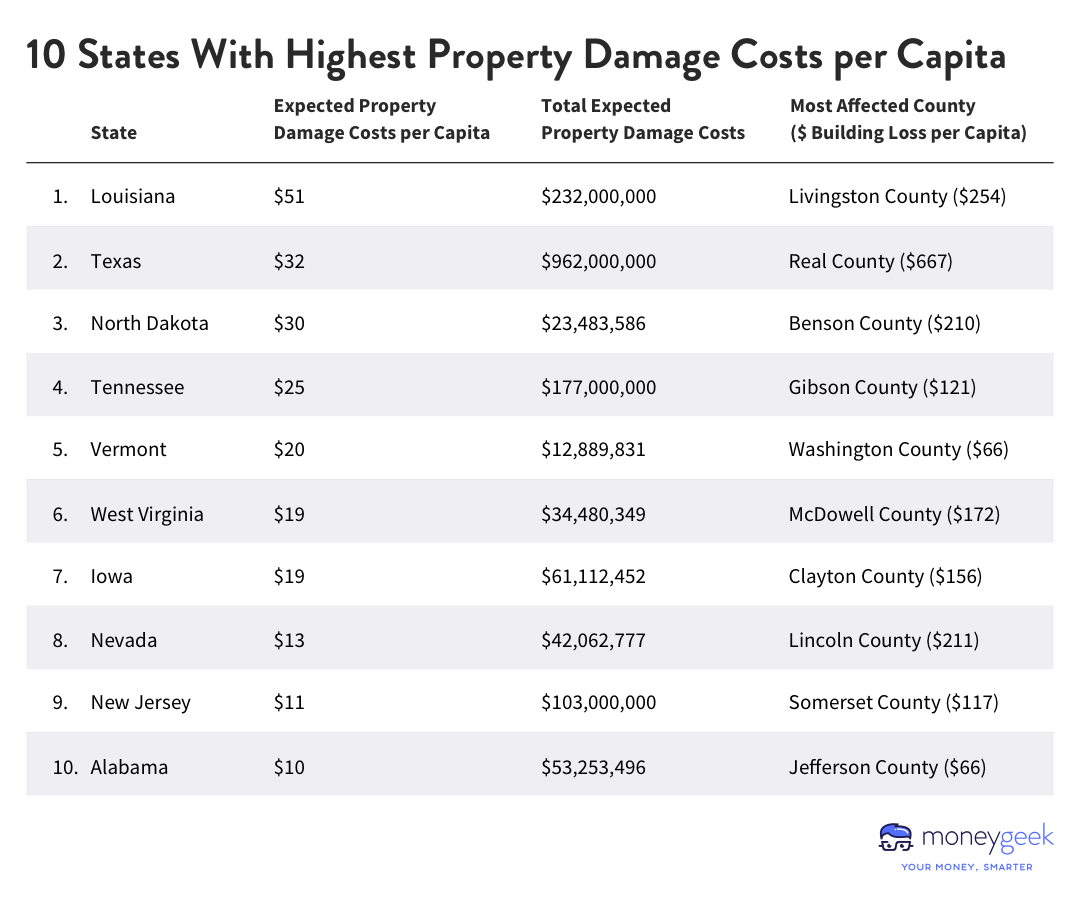
Flooding Risks and Homeowners Insurance
Flooding risks are increasing due to climate change, and flood damage is predicted to rise 26% over the next thirty years. As the atmospheric temperature rises, so does the amount of moisture in the air, increasing the chances of rain and sudden violent storms that can cause flash flooding.
While riverine flooding can happen in any area where available natural or constructed channels for water are full, flash flooding can cause large amounts of water to move rapidly through an area. Due to the water's density, these flooding events can be extremely dangerous. FEMA estimates that water from a flood moving at 10 miles per hour can put as much pressure on a structure as 270 mile-per-hour wind gusts.
Although every state in the country is potentially at risk from riverine flooding, some communities bear a higher risk than others. Over the next thirty years, flooding in poor communities, particularly those with large Black populations in the American South, is predicted to increase by 20%. Often, the municipalities in these areas have yet to invest in flood adaptation or improved infrastructure, and studies show that during disaster recovery, poorer communities are less likely to receive aid than wealthier communities.
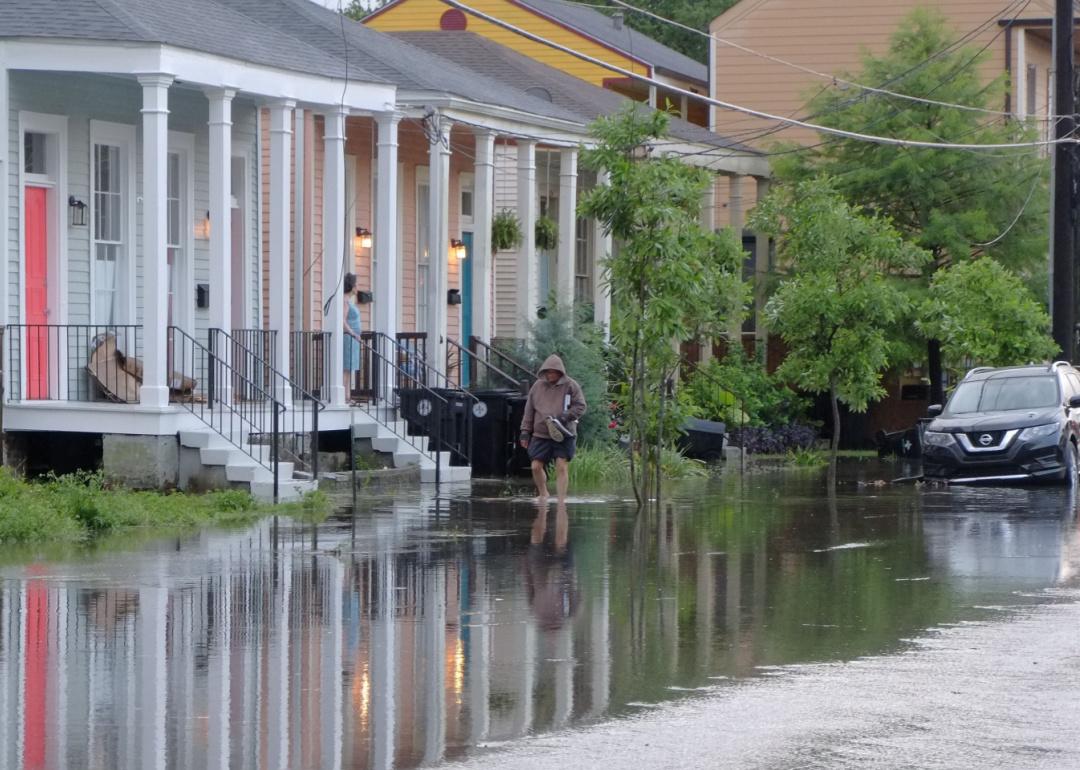
Protecting Your Home and Belongings from Flooding
Navigating climate change and insurance as a homeowner can be confusing, especially since most homeowner insurance policies do not cover flooding from weather events. The loss of property from flooding events can be extreme, but both homeowners and renters can take the following measures to protect themselves:
- Find out if you live in a flood zone.
The Federal Emergency Management Agency (FEMA) website offers a flood map where you can learn whether your address is affected by flooding.
- Learn more about flood insurance.
Check with your insurance agent to see what types of damage are covered by a good flood insurance policy. FEMA offers residential flood insurance policies through the National Flood Insurance Program (NFIP). Find out what is and isn't covered. For example, some flood insurance policies cover structure only, while others may include contents. However, most policies will not cover damages caused to personal property stored in basements.
- Educate yourself — even if you're a renter.
Renters insurance also does not usually cover flooding, but renters living in flood-prone areas can purchase additional coverage to protect their property.
- Check your auto insurance coverage.
Auto owners should look for a comprehensive policy that covers flooding. Otherwise, the loss of a vehicle due to flooding may not be covered by your auto insurance.
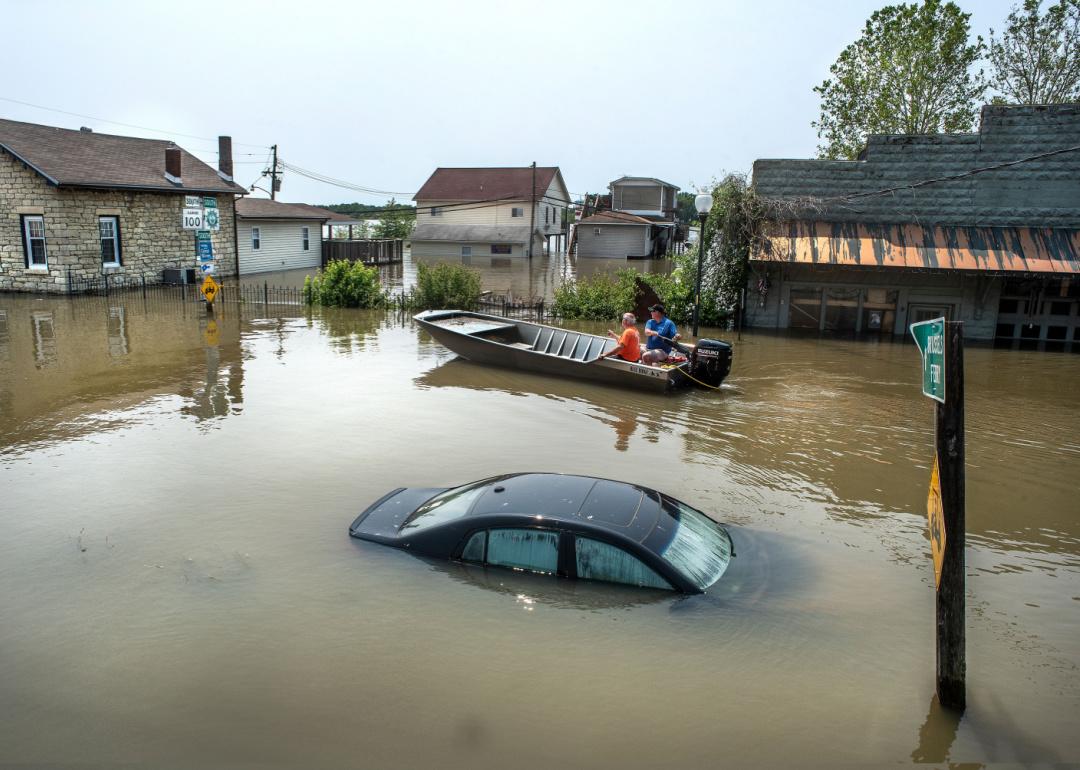
Methodology
MoneyGeek analyzed FEMA's 2021 National Risk Index data — the most recent data available — to determine expected annualized property damage losses from riverine flooding events across the country. Our analysis included property losses from damage caused to buildings due to the overflow of streams, rivers and constructed channels. We analyzed total property damage and ranked states by per capita losses to determine which states are the most burdened by property damage due to riverine flooding.
SOURCES
- Federal Emergency Management Agency. "Chapter 2: Types of Floods and Floodplains." Accessed March 16, 2023.
- Federal Emergency Management Agency. "The National Risk Index." Accessed March 15, 2023.
- The Conversation. "New flood maps show US damage rising 26% in next 30 years due to climate change alone, and the inequity is stark." Accessed March 16, 2023.
- The Conversation. "The 2021 hurricane season showed US isn't prepared as climate-related disasters push people deeper into poverty." Accessed March 16, 2023.
This story was produced by MoneyGeek and reviewed and distributed by Stacker Media.



